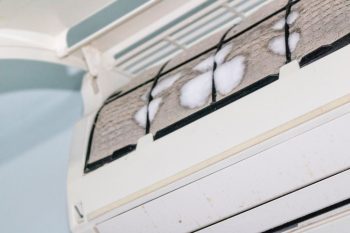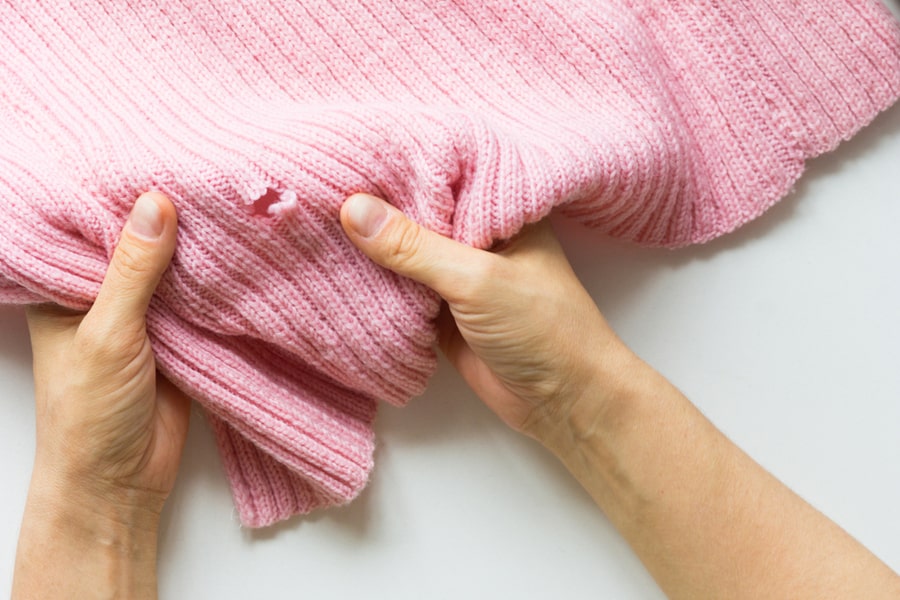
Most people are surprised to find mysterious holes in their clothes, and they cannot remember tearing or snagging them.
It is easy to assume that moths and other insects are snacking on your favorite sweater or T-shirt.
However, have you ever thought that your washing routine might be the problem?
There are multiple reasons why your garments tear while doing laundry. We gathered some interesting information to help prevent more damage to your dress.
Bad washing routines are the leading cause of tear and wear after laundry. In addition, a faulty or damaged washing machine drum can also rip and tear holes in clothes.
In addition to looking at the reasons for damaged fabric, the article will also look at possible solutions that can help prevent more tears and holes in clothes.
Eight Reasons Why Holes Appear in Clothes After Washing

Investigating the cause is the best option for preventing more holes from appearing in your clothes. Here is a handy list that can help you eliminate the reasons for the issue:
1. Using Too Much Bleach and Detergent

One of the most common problems that might result in more tears and holes in your T-shirt is using too much bleach and detergent. Repeated use can also damage the laundry’s fabric over time.
Detergents and bleaches are often used when washing clothes. Detergents have working enzymes that grab and dissolve away various particles.
On the other hand, bleaches do not remove dirt but simply discolor markings or dyes on clothes.
Natural fabrics like wool and silk are susceptible. The harsh chemicals and enzymes from detergents and bleach can easily damage them.
In addition, clothes with mixed fibers that include natural fabric are also at risk of irreversible damage.
Before doing the laundry, you must read the care labels on clothes or risk destroying them.
Detergents can distort the fabric in your sweater, leading them to shrink. Over time, the fabric becomes too weak, and holes appear.
Using a suitable detergent for your clothes will help prevent holes from appearing.
You should always have three detergents: one for white clothes and sheets, another for natural fabrics, and one for colored fabrics.
2. Spin Cycle Speeds
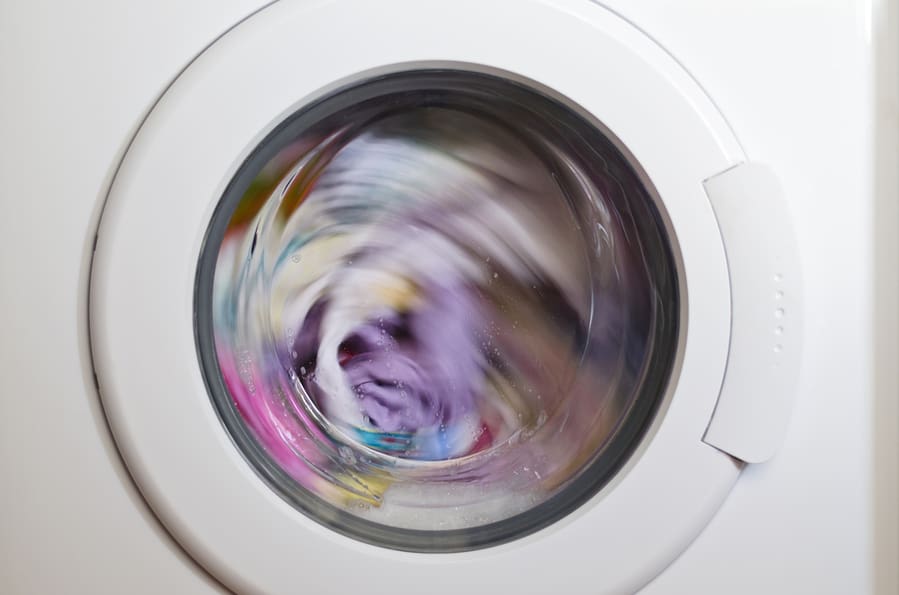
Are you using the proper cycle for your clothes?
Care labels are not only for detergent warnings. They also give you a guide for drying different fabrics.
It is also essential to look at the fabric material to prevent selecting the wrong washing settings.
Spin cycles can stretch out different fabrics at different rates. Delicate fabrics like cotton, wool, or silk can easily stretch out, leaving tiny holes in the fibers.
Always consult your washer manual before setting the spin cycle. You can always check online or call the manufacturer if you cannot find any information.
3. Overloading the Washing Machine
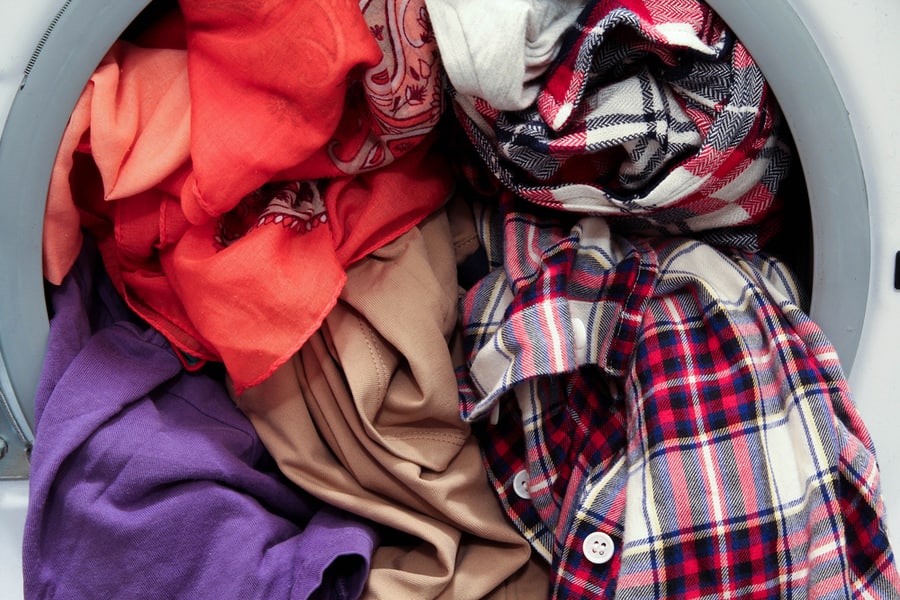
Overloading your washing machine might be the culprit behind those holes in your clothes.
There is a common misconception that washing more clothes in the washer is more efficient.
On the contrary, it severely reduces the wash quality, and your shirts are at risk of tearing and wearing.
Stuffing the drum increases the contact between the clothes, drum, door seal, and glass.
Increased friction makes it easier for dresses to get snagged or trapped, which can result in fabric damage like tears and holes.
Overloading the washer also leads to more clothes tangling together.
As the machine goes into a spin cycle, the clothes get dragged together, which can result in more tangling and stretch them out, leading to ripping.
In addition, overloading the washer can put stress on the drum, bearings, and motor, which are expensive to replace.
Check the user manual for the washing machine’s loading weight. Remember that fewer clothes in the dryer will improve its washing capability.
4. Dryer Drums
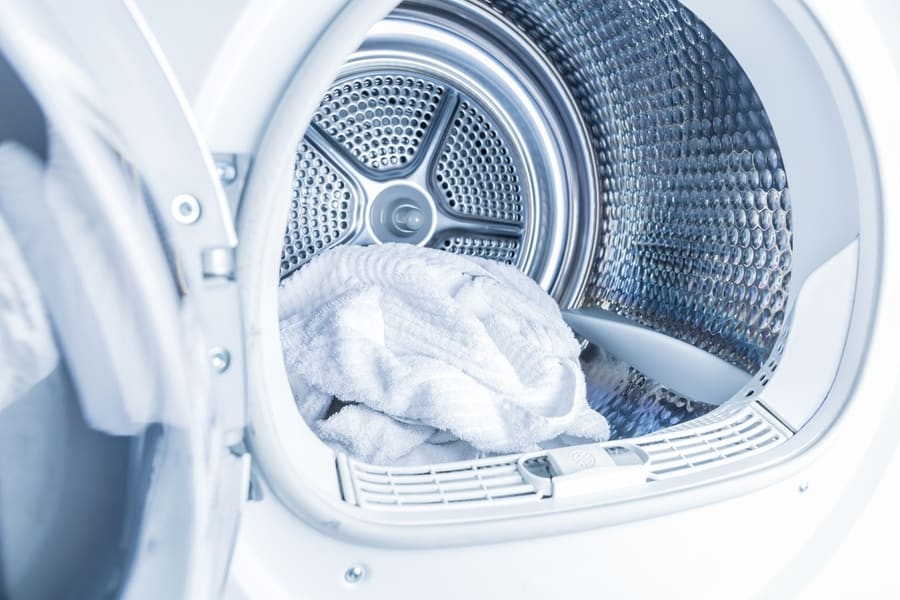
A damaged drum might also be causing the rips in your clothes.
The inner drum is the part of the washer that moves around and cleans your clothes. The drum has tiny perforated threads and holes that allow water in and out while agitating the clothes to remove the stains.
However, all holes or broken threads in the drum can be a massive problem for your garments. The clothes can easily get snagged between the threads resulting in tearing.
In addition, a misaligned dryer drum can also eat up your clothes. The fabrics can slip in between the inner drum and dryer housing, which can be seen as black streaks on the clothes.
If you want to check if the drum is damaged, turn off the machine, and ensure the drum is not spinning.
Shining a light into the drum will help identify issues that you might have.
Do not try and fix them yourself. Always call a professional to make any repairs to the washer.
5. Opened Zips and Unfasted Hooks

Did you remember to zip up your clothes?
Zippers, grommets, hooks, belts, and buttons can also be the culprits.
Fabric embellishments can easily catch lighter fabrics in the washing machine. If they pull too hard on the material, it can lead to tears.
In addition, bra underwires can also be problematic. The underwire can poke through the bra, get lodged at the drum’s side, or get stuck in other clothes.
6. Foreign Materials in the Tub

In addition, foreign material getting into the drum can have the same effect on your clothes.
Nails, pins, screws, pens, or coils can cause damage to the drum and also rip through fabrics.
Likewise, large particles of sand or soil can also increase friction in the drum, which leads to more wearing out of clothes, causing holes in your garments.
7. Quality of Clothing

Sorting your laundry before washing is not only to prevent colors from leaking onto your whites.
Clothes are made from different fabrics, which can be affected differently by your washing techniques. Light fabrics like cotton and silk tend to get easily torn.
8. Rough Surfaces
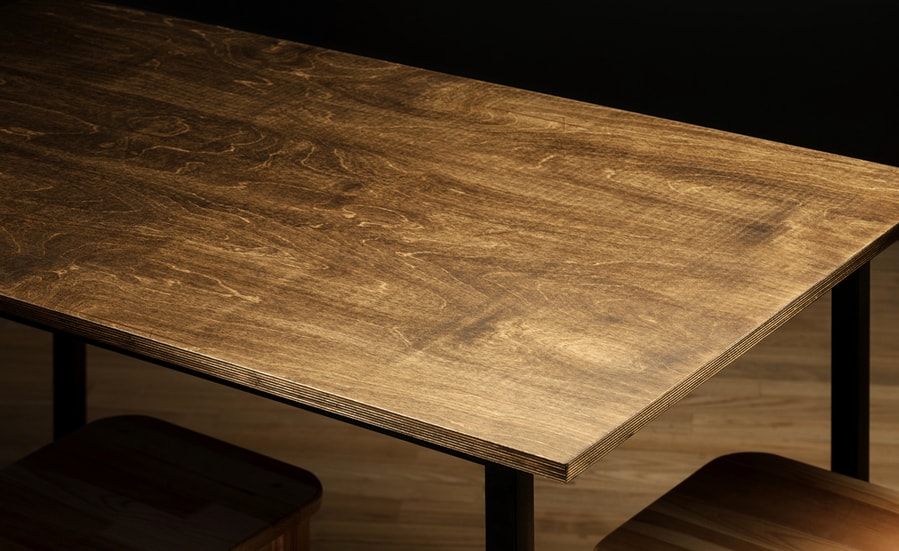
Lastly, in some cases, rough surfaces like tables and walls can cause fabrics to wear out or have small tears.
Continuous washing makes the clothes undergo more staining, making the small holes more visible over time.
Storing Clean Clothes

Storing your clothes is also crucial to preserving your clothes.
Moths and silverfish love feeding on fabrics, causing those annoying holes to appear in your laundry.
Avoid storing clothes in dark areas that do not get enough ventilation.
Summary
Improving your washing routine is the best solution to prevent more tears and holes in your clothes.
Always check the care label of the clothes before doing your laundry.
Likewise, always ensure that you follow the washer’s requirements for any laundry pile you want to clean.
Lastly, avoid putting objects that can damage the drum or tear your clothes’ fabric.
Frequently Asked Questions
Can a Damaged Washing Machine Cause Holes in My Clothes?
Broken threads or an imbalanced inner drum can snag clothes, causing them to tear and rip.
Can Overloading a Washing Machine Damage Clothes?
Overloading your washer reduces the washing quality and increases the chances of tangling, which can stretch clothes and damage them.








